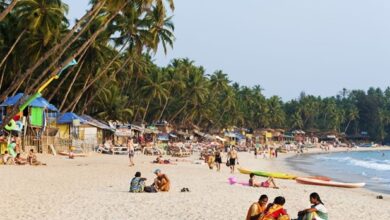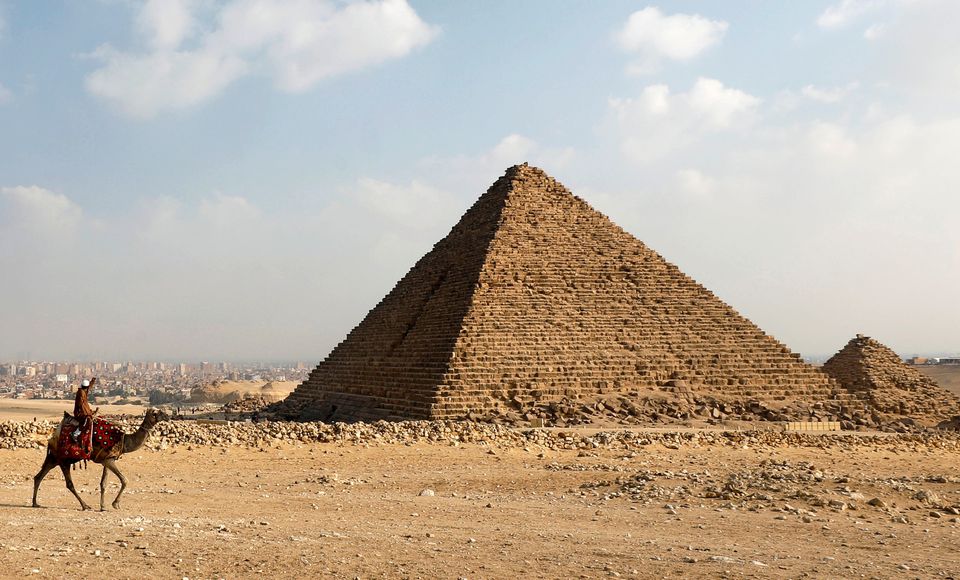Few towns located on a coast can resist the influence of tourism. Although Ile de Ré remained largely a secret haven for fishermen and farmers for 1,000 years, this island off the mid-West coast of France has finally succumb to tourists and the money they spend.
A little more than a decade ago, Ile de Ré was still filled predominantly with the families that have inhabited the island for centuries. But former French Prime Minister, Lionel Jospin, bought a house there in the 90’s, and as one local described it, the island became a “playground” for the rich during their summer holidays. Now, of its 18,000 inhabitants, only 25% live in Ile de Ré all year round.
“All of the culture on the island has disappeared,” claims Eric, who was born there.
Despite the tourism offices and meandering visitors, the island seems to have maintained much of its original look and charm due to strict laws governing construction. There are no big hotels, no buildings more than two stories high and no public advertisements. All buildings must be built with the same specifications they have always had historically: white walls, terra cotta roofs and doors that must be one of three colors: blue, green or grey, representing the fishermen, farmers and other locals, respectively.
The interior of Ile de Ré is a remarkable example of preserved, historical landscapes. With the exception of a couple supermarkets– which look like large barns from the outside– and the newly paved roads and trails, the farms and hills are uniformly carved like a well-trimmed bush.
Some of these rules have both practical and aesthetic purposes. The low buildings and narrow corridors help create a barrier from the harsh winds off the ocean in the winter. During the summer, the zigzagging passageways fill with bright flowers, creating the perfect atmosphere for getting lost on a leisurely stroll.
Even the local animals look like they always have. Oddly enough, the donkeys of Ile de Ré wear pants. The shaggy-haired breed traditionally worked on the island’s marshes, carrying salt, and so the locals gave them pants to protect them from rashes caused by mosquitoes and sodium. Now the donkeys, still in their striped cotton pants, are a kitschy fixture for rides and photos.
Today the three principle towns, La Flotte, St. Martin and Ars have harbors surrounded by upscale restaurants and pubs, filled mostly with seniors and families gazing at the picturesque views of sailboats on the Atlantic Ocean while nibbling on the oysters known for their nutty flavor.
“All the oysters come from the island because it would be a shame to import them,” said Eric, who also runs a local gourmet shop.
A great way to occupy time on the island is to ride bicycles. Ile de Ré is filled with elaborate bike trails connecting all the towns. It’s relatively easy to stop off for a gelato or a cold drink, or to go to the beaches to bathe in the sun or the cool Atlantic waters. The trails pass through vineyards and farms, a natural bird reserve, salt marshes dating to the 10th century, a large stone prison, German bunkers from World War II, a small lighthouse with a great view from the top and a church with a black and white spire that was used by sailors as a compass to safely navigate through the shallow waters of the coast.
During the low tide in the afternoon, the coastal waters of the north side of the island recede significantly, leaving small boats on the ground until high tide. Some people sit in the dried-up patches of sand on sunny days, while the crowds flock to the sandy and pebbled beaches on the south. During high tide, the water on the north does not look particularly pleasant to swim in, but the coastline has nice promenades lined with stone walls for leisurely strolls.
With the exception of the largest town, St. Martin, Ile de Ré has no nightlife. The island, however, is across from one of France’s most popular tourist destinations, La Rochelle, which has plenty of concerts, clubs and activities. Buses between the two places stop running around 7:30pm, so if you don’t have a car, you will be stuck wherever you are or pay a minimum of 50 Euros for a taxi to return. To get to Ile de Ré, trains run several times a day from Paris to La Rochelle, but tickets should be booked at least a week in advance, especially if you have a Eurorail pass. Buying a ticket at the Montparnesse station, where the trains depart, can take a few hours. La Rochelle train station has several car rental agencies, which is probably the best idea to get around since public transportation is sparse and taxis are expensive. The island has several camping grounds.
Some of the other activities on Ile de Ré include fishing, sailing, flying kites, water sports, boat cruises to nearby islands, thelasso therapy (the medical use of seawater) or visiting some of the unpretentious art galleries exhibiting pieces by local as well as international painters.
Ile de Ré offers a relaxing and wholesome environment. It’s represents the perfect blend of tradition and modernization for the traveler who seeks little more than a quaint atmosphere with a few amenities.
Practicalities
During high season, hotels range on average from 60 to 120 Euros and up. For a modest hotel, try L’Hippocampe in La Flotte or make an inquiry at Le Bistrot du Marin in Saint Martin, which has small double rooms for 65 Euros. The island also has several campsites for 20 Euros-a-day that are geared for families and provide shared facilities such as pools and special playing areas for children. If you are seeking luxury, Le Clos Saint Martin is a private villa with a spa by Clarins that has rooms ranging from 400 Euros. For the environmentally minded, Les Vignes de la Chapelle adheres to the EU Eco-Label Scheme that requires efforts to save water and energy, reduce waste and take measures to improve the local environment. The hotel has a swimming pool and Jacuzzi heated by solar panels and recycles rain water for its garden. Double rooms cost around 200 Euros during high season.
Most of the restaurants on the island feature menus predominantly filled with seafood and in particular oysters, the local delicacy. Prices vary, but in general, most restaurants fall in the range of 20 to 30 Euros for a meal, which usually includes a plate and either an appetizer or dessert. For a romantic evening, try Bô, which features Mediterranean cuisine starting at 29 Euros a meal. Located in Saint Martin, Bô offers a cozy environment with a garden and terrace. The house specialty is risotto with langoustines, asparagus and Parmesan cheese. For more casual fare, try the Creperie Café de L’Ilot, which has crepes and salads under 10 Euros. The island also has a few supermarkets filled with all the standard French fare to avoid the costs of restaurants.
For more information such as hotels and restaurants, visit the island’s official tourist website at http://www.holidays-iledere.co.uk/




